It’s no longer a battle of the brands. The bigger battle, after two years of inflation, is between brands and own label. Who’s winning?
At first glance, 2023 looks like it was a bumper year for UK grocery. The Grocer’s Top Products Survey, using exclusive data from NIQ, shows UK shoppers spent an extra £7.8bn in supermarkets, an increase of 6.4%. That growth wasn’t driven by a few high-performing categories either. An overwhelming 92% of the 118 categories analysed added value in the past year and 40% of those achieved double-digit sales growth.
But those figures couldn’t be more deceptive.
Far from a year where shoppers splashed out in the supermarket aisles, the past 12 months have been shaped by a cost of living crisis that has weighed heavily on household budgets – and on grocery’s bottom line too.
At the start of the year, one in four UK families said they were regularly running out of cash for essentials, according to a February survey by the Together Through This Crisis initiative, as double-digit inflation, high energy bills and soaring mortgage rates crippled millions.
The rising price of food only compounded these struggles. By March, food inflation was at a record high of 19.2% – the biggest annual increase in 45 years – with the average price of some everyday products, like milk, eggs and sugar, up by as much as 50%.
The combination of Brexit, Covid-19 and the ongoing conflict in Ukraine caused huge upheaval to supply chains and many suppliers struck long-term contracts on inputs such as fertiliser to guarantee supply, locking them into high prices even as inflation eased.
![Beans Face Off_RGB[18]](https://dmrqkbkq8el9i.cloudfront.net/Pictures/480xAny/9/5/0/311950_beansfaceoff_rgb18_56926.jpg)
Against this challenging backdrop, shoppers spent more of their hard-pressed incomes on groceries, driving up values. But they did so out of necessity rather than choice. And many opted to dial out of inflation as best they could by switching to cheaper own-label products, at the expense of brands.
At the expense of supermarkets too. The Top Products Survey does not include figures for the discounters, but their influence on the market has been growing. NIQ Total till sales show Aldi and Lidl consistently enjoyed double-digit growth throughout the year. More than 85% of their sales have been private label.
So the far more telling figure when it comes to 2023 is volume, with unit sales in the same period down 3.4% (and in many categories, far more) as consumers were forced to pay more for less.
The impact of this across fmcg was near universal, with 80% of categories experiencing volume declines. And though luxury items were predictably among those most affected – champagne was quaffed 13.5% less, for instance – even essentials didn’t escape.
Households bought 12.9% less babymilk, 6.2% fewer packs of butter and spreads, and 4.5% fewer packs of wrapped bread. All in an effort to make incomes stretch that little bit further.
“Suppliers will need to continually address input costs to ensure they can maintain quality products and a steady profit margin”
Silvia Rindone, retail lead for UK and Ireland at EY
So how has shopper behaviour shifted in response to the challenging economic climate? How have suppliers and retailers responded? And can either industry or consumers expect any respite in the year ahead?
Trading down has taken many forms. The most obvious is the growth in value and volume sales of own-label groceries, with value up 11.8% in the past year (not including the discounters), while 15 categories enjoyed double-digit volume growth, from ambient soup and bar soap to toothpaste and shower products.
Economising wasn’t always bad news for grocers, however, with many Brits diverting cash they would’ve spent on hospitality and leisure, such as meals out or holidays, to a few little indulgences in their shopping trolley instead.
“We know the ‘lipstick effect’ is well documented when times get tough,” says Amy Thorne, founder and managing partner of food marketing agency Taste.
“In food and drink, people gravitate towards the indulgent treats and luxury products they can afford and might serve as a substitute for expensive meals out. This shift allows brands in this space to communicate their ability to become a part of that treating repertoire – especially ingredients, chocolates, spirits and premium fresh foods,” she adds.
Who escaped the chop?
It was a macro trend that saw a handful of categories escape the chop. Cooking sauces using dried herbs and spices, for instance, grew volumes by 7.4%, as people stocked up cupboards for home-cooked meals. Baking essentials such as flour (3.1%) benefited too, as did small cosmetic treats, with the beauty subcategory up 7.4%. At a brand level too there were some notable success stories, with Haribo, Deliciously Ella, Crosta & Mollica, Candy Kittens and Harry’s shaving enjoying strong sales.
But the good news largely stopped there, with many other behavioural changes designed to navigate a tough economic climate hitting fmcg hard. In fact, 90% of households have looked to make savings on groceries in the past year, says NIQ.
“It’s all about cost saving – whether that is finding ways to spend less on the same items, or shopping around for cheaper alternatives,” says Harvir Dhillon, economist at the British Retail Consortium. “The past year has seen the rise of the savvy consumer, stretching their pound as far as possible.”
Those savvy shoppers bought less, bought smaller, hunted out discounts and migrated between different retailers to secure the best price on their weekly shop. Thirty per cent have done so by seeking out promotions, found NIQ’s research, 26% by wasting less, 25% by actively comparing prices on items at different retailers and another 25% by attempting to avoid impulse purchases with a carefully curated shopping list.
They also switched off smartphones and returned to stores in the hope that bricks and mortar shopping would help them spend more efficiently.
By June there had been an additional 34 million visits to stores year on year, with online just 10.4% of the total grocery market. The biggest beneficiaries were Aldi and Lidl, but there was much more bargain hunting, and the brief return of the big weekly shop during Covid is long forgotten.
Shoppers in this climate have proved “much more price aware and much more determined”, says Mike Watkins, head of retailer and business insight at NIQ. And they’re “quick to change their behaviour” if it means securing a better deal.
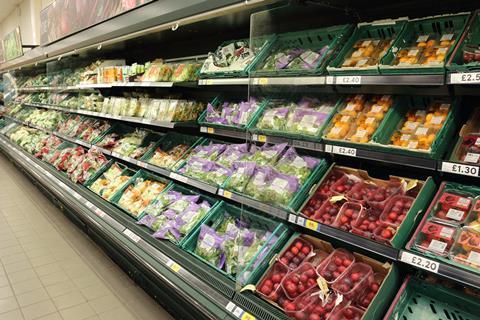
The rise and rise of own label
Crucially, that included a willingness to move away from brands and opt instead for cheaper own label alternatives. It’s a swing that has put private label back on the front foot after falling behind in terms of value growth for the first time since the pandemic, when brands were able to capitalise on the sense of reassurance they provided to locked down shoppers.
By April, own label accounted for 54.7% of grocery sales, according to Kantar, and 62.6% of volume. As the peak of food inflation hit that month, NIQ calculated that own-label volumes were up 1.1% versus a 5.6% decline in branded sales, in large part driven by a 14.2% increase in volume sales of value tier own label ranges.
By September, the period covered by Top Products data, that lead had slowed as inflation eased, with own label seeing a small decline of 2% in volume, the equivalent of 200 million units. But that’s still better than the performance of brands, with volumes down 2.6%, or 500 million units.
Private label also achieved significantly more value growth, at 11.8% versus 8.1%, despite keeping its average price at two thirds that of brands. Own label was ready and raring to capitalise on this type of opportunity long before a cost of living crisis took effect, believes Paul Stainton, partner at International Private Label Consult (IPLC). “We all know of the work that’s been done on private label over recent years in terms of improving the quality of the products and expanding the ranges,” he says.
“Without retailers really knowing, they were laying the foundations so that when the cost of living crisis hit, the fact there were such strong private-label brands and products already out there made it a lot easier to emphasise that quality and to push even more customers their way.”
The multiples have worked hard to build on these foundations in the past year. In some cases, that’s meant boosting the breadth of their own label ranges.
At Asda, for instance, it’s added an extra 813 private label SKUs across key categories compared with 2022, many of them featuring in its award-winning new Just Essentials value range. The economy tier own label range grew 21% year-on-year as of Q3, its customers keenly stocking up on pasta shapes for 41p and apples for less than £2 per kilo.
At Tesco, the retailer opted for a slightly different approach, reducing own label SKUs by more than 500 but still managing to grow value sales (10%) by focusing on innovation in fast-growing categories such as plant-based, bolstering its Plant Chef line with five new frozen lines to coincide with Veganuary, for instance.
“We’re seeing growth in tertiary or store-owned brands, and some retailers are giving a lot of shelf space in store to these,” says Nigel White, chief executive of The Marketing Place.
“Consider the size of the Tesco Fire Pit range, or Hearty Fare and Eastman’s deli products; or if you take a look in chilled at Asda, you’ll find big ranges of Ed’s Diner, Harry Ramsden’s, House of Yum, Bom Bahia, Take Out Club, Cookin’, all alongside the revamped Bistro range.”
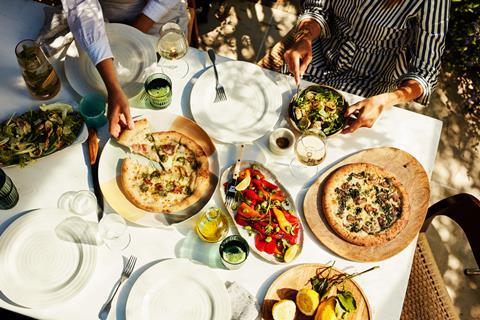
Smaller brands suffering
This rise of the store-owned brand has seen perhaps the biggest impact on SMEs, he adds. “There’s a wider issue for smaller brands here as retailers prioritise distinctive own label ranges which should tempt shoppers in-store and their loyalty, alongside the bigger brands which consumer expect and demand,” he says. That has made it critical for smaller brands “to be clear on what incremental value or new niche they are opening up” – or risk losing out.
The impact on categories of the switch to own label has been uneven, with some far more impacted than others. In those categories where own label already had the bigger chunk of the market, for example, that dominance has been cemented. It’s a dynamic played out in canned fish where, while brands lost 11.7% in volume sales, own label added 4.1% in unit sales and £12m (6.5%) in value to the category. Brands lost a chunk of their market share in the process and now account for just 44% of overall value, compared with 48% last year, with three out of five of the category’s biggest players losing both value and volume.
“There has been a trade down from consumers opting for cheaper private label options when it comes to canned fish products over the last 12 months,” accepts Jeremy Gibson, marketing director at Princes Group, with volumes at its Princes Foods brand down 18.9%. To combat that, the brand has focused on promotional activity, which “provides immediate value for the shopper”, he says, with plans to increase this activity throughout 2024.
Market leader John West too may have added nearly a million in sales, but it only achieved that through inflation, with volumes also down 7.7%.
“Navigating inflation means consumers are particularly price-driven at this time, but we have worked hard with our retail partners to minimise cost increases to our consumers,” says Paul Stephenson, MD at John West Foods. “In addition, at John West, we have taken strategic decisions, despite the pressures on our own business, to protect consumers from some of the most extreme commodity price increases.”
In those categories where inflationary pressure has been particularly high too, there’s also been a big appetite for own-label alternatives. In butters, spreads and margarine, for instance, the steep 18.5% hike in average price across branded options has driven a 6.8% increase in volume sales for own label.
‘Value over taste’
Of the five brands in Upfield’s portfolio, only one, I Can’t Believe It’s Not Butter, escaped a hit to volume sales as a result. That’s despite (or because of) the spreads giant cutting pack sizes across three of its biggest brands in an effort to mitigate inflation back in 2022.
“Due to very real cost of living pressures, we saw some shoppers pursue propositions that offered value over taste,” says marketing director Ian Hepburn.
The fact that I Can’t Believe It’s Not Butter proved an exception was thanks to its “outstanding value for money,” he adds, with shoppers perceiving it as a “cost-effective staple in their weekly basket.” And though he insists there’s still plenty of appetite for those brands that can boast sustainable credentials in the category too – its Flora range has 68% less climate impact than dairy butter, it claims – that type of proposition didn’t prevent own label growing its market share in the category by three per cent in just 12 months, from 23% last year, to 26% in 2023.
“The shift to own-brand should be a wake-up call to brands that haven’t prioritised building loyalty and community with consumers,” says Thorne.
“When living costs are stretched, the competition for a place in the shopping basket heats up. The brands that have left an impression with their audiences are the ones that will be front of mind on the shop floor.”
Branded suppliers have been limited in the extent to which they can curb these losses to own label, though. Largely as they’ve been hamstrung on price.
“We know how concerning the rising costs of the weekly shop has been for households, but Brexit, the pandemic, extreme weather conditions and the war in Ukraine have all had an impact on input costs,” says Balwinder Dhoot, the Food & Drink Federation’s director of sustainability and growth.
“Price rises are a last resort, and brands have done all they can to absorb as much of the cost rises to shield shoppers and provide value for money,” he adds.
“However, rising costs for ingredients, packaging, energy, labour, transportation and logistics have risen by more than a third in the last 30 months, so manufacturers have been responding in a variety of ways to keep cost lower by reducing product ranges, becoming more energy-efficient, and reviewing investment plans.”
Justifying premium prices
Often unable to match own label on price, brands have instead focused on brand equity and innovation. It’s the right move, believes Silvia Rindone, retail lead for UK and Ireland at EY. “To limit this behaviour, brands need to justify their premium price position – this can only come through innovation, by finding something different that can entice and meet customer needs,” she says.
To combat a 2.2% volume decline in branded crisps, snacks and nuts for instance, as own label grew 5.6% in the same period, market leader Walkers Foods says it focused on both extending its product pipeline and “driving love and affinity for our brand through purpose-driven campaigns,” says PepsiCo UK chief marketing officer Fiona Tomlin. NPD included the launch of three limited-edition Walkers crisp flavours, inspired by its Wotsits, Monster Munch and Doritos brands in June.
Rival KP Snacks took a similar approach, rolling out a slew of new flavours for its McCoy’s brand, as well as a non-HFSS popcorn as part of its Popchips portfolio. It also expanded its KP Flavour Kravers range, points out sales director Andy Riddle.
And while it still wasn’t quite enough to fend off the threat of own label for branded crisps, snacks and nuts, in other categories this focus on product rather than price really worked.
Some brands outperforming own label
In meat-free, for example, although both value and volume suffered, the damage to own label ranges was far greater than that for brands, with an 18.5% fall in volumes compared to 11.1%.
For Jack Rutherford, commercial director at This, which added nearly £5m in sales in the last year and grew volumes by an impressive 61.7%, “despite own-label often being competitively priced, the quality has not always been consistent and with many rebrands and reformulations in own label, consumers haven’t been able to build up the same level of trust and, therefore, loyalty”.
At This, he says the team never launch a product “we don’t think can trick a meat-eater into thinking it’s meat once in a dish,” a high bar for innovation which drives its higher-than-average repeat rate and rapid sales growth, he says.
In many impulse categories, the erosion to brand loyalty has been slower too. In sugar confectionery, own label lost 8.8% in volume sales, versus only 1% in brands, while in cereal bars own label managed to lose 13.4% in volume from its already marginal market share, as brands largely held on to volumes at –1.1%.
Own label won’t find it straightforward to hold onto its competitive edge in the longer term, believes Rindone. “While consumers are looking for cheaper products, they still expect a high level of quality from their goods,” she says.
“Suppliers will need to continually address input costs to ensure they can maintain quality products and a steady profit margin. Not all suppliers are able to perform to fulfil demand from discount retailers as for some products, the high level of volume required is not sustainable.”
It’s perhaps why bolstering own-label ranges hasn’t been the only focus for retailers when it comes to demonstrating value to cash-strapped consumers in the last year, with many tweaking pricing and promotional strategies too.
“The new kid on the block was the use of loyalty cards by retailers, and shoppers bought into that significantly,” says Watkins.
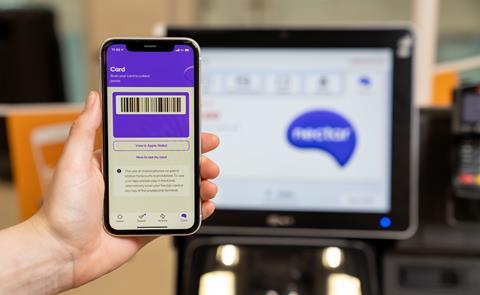
In April, Sainsbury’s launched its Nectar Prices initiative, providing the 18 million shoppers signed up to its Nectar scheme with additional savings across 300 initial SKUs. By the end of the summer, the initiative had been rolled out to over 4,000 products.
Tesco Clubcard cut the value of its points early in 2023, but then focused on providing a greater array of discount prices, saving shoppers around £4.15 per week since the start of the year, or a 5.4% discount on the average cost of a shopping basket. And in May, Morrisons More was relaunched too with a return of points-based offers, such as Morrisons Fivers, in combination with exclusive prices for members.
“Other retailers continue to succeed on an every-day low prices strategy, showing customers are looking carefully at how to get the best deals,” points out Dhillon. Often this strategy has included direct comparisons with discounters to stem the flow of shoppers flocking to them.
Price matching has its limitations
To combat losses, Tesco, Sainsbury’s, Asda, Morrisons, M&S and Waitrose all announced price cut initiatives, many rolled out under a price match mechanic, although the challenge of entering into a battle over margins was evident in Asda’s decision to pull the plug on its own Home Bargains price match scheme in October.
Aldi and Lidl, for their part, have responded cheerfully to such efforts with their own widespread cuts, slashing prices on fresh produce and private label ranges by as much as 10%.
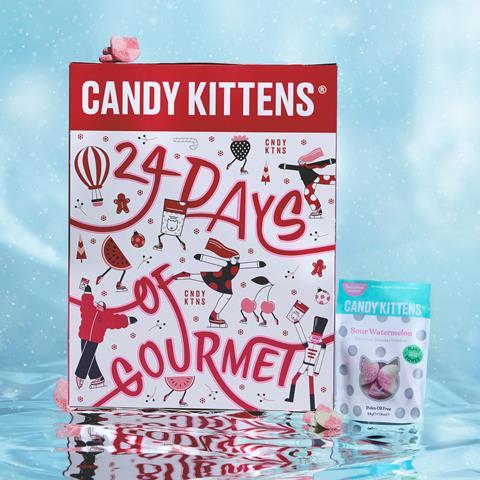
For brands, both promotions and price cuts by retailers have been a mixed blessing. On the one hand, great deals drive up volumes and limit the exodus to discounters, where 90% of shopping baskets are made up of own-label goods. But on the other, it’s served to apply further pressure to their already squeezed bottom lines.
Painful as it is, that pressure doesn’t look likely to fade any time soon.
Inflation has started to ease in the latter half of 2023, a shift that has seen brands start to win back market share from private label. “It’s clear that in the first half of the year, we were seeing consumers switch to private label. However, in the past three months we have seen a switch back into our brands,” says Stuart Ibberson, director of BSM, cheese & cooking categories at Arla Foods.
“That’s because Arla continues to work hard to minimise the inflationary impact for consumers and at the same time ensure that our farmers are able to maintain the supply of our products into shops.”
Inflation is stubbornly persistent
In November, annual inflation decelerated further to 4.3%, down from 5.2% in October, according to BRC-Nielsen Shop Price Index data. That’s below the three-month average rate of 5.3%. And the number of promotions last week reached a five-year high of 37,219 [Assosia] in the full-service supermarkets.
But “while grocery price inflation has slowed for the first time since July 2022, we are only seeing year-on-year price falls in a small number of product categories”, says Rindone.
“This will continue into 2024 as inflation continues to fluctuate and GDP growth remains sluggish. Oil prices, frozen income tax thresholds, inflation and a deteriorating labour market will put pressure on consumer spending well into the new year,” she adds.
What’s more, as Dhoot points out, after two years of inflation has added an estimated 25% to the cost of groceries, “it is still a concern that not all input costs are going down yet. The impact of the time lag with commodity prices and extreme weather events we’ve experienced this year continue to have a significant impact on the availability of raw ingredients and the cost of food production in the UK.”
Adds Rindone: “The challenge will be for retailers to work together to lower prices across the board in order to support consumers through challenging times.”
And even once the economy normalises, it isn’t a given that brands will see market share swing back their way again.
“We’re certainly seeing brands trying to fight back,” says Stainton. “We’re seeing that with an increase in spend on promotion, some really eye-catching initiatives in stores and lots of activity to try and gain back some of that lost share. So private label is up against it.”
But now retailers have caught a whiff of what it’s like to have their own label lines on top, “I don’t think they’re going to let that go”.
Greedflation tag proves hard to shake off
Allegations of so-called ‘greedflation’ followed UK grocery around like a bad smell this year.
The sensational claim was first made by Tesco chairman John Allan in January. Speaking to the BBC, Allan claimed the retailer had “fallen out” with multiple suppliers amid a barrage of requests to bump up prices in line with inflation, even assembling a crack team to investigate illegitimate claims of cost increases.
The Grocer’s Top Products Survey is sourced using data from NIQ’s Scantrack service, which monitors weekly sales data from a nationwide network of EPoS checkout scanners and represents sales in grocery multiples, co-ops, multiple off-licences, independents, forecourts, convenience multiples and symbols, online grocery retailers and online fulfilment stores (‘dark stores’). Personal care, OTC and baby products also include chemists. Some category definitions are subject to change.It was “entirely possible” that struggling shoppers were being taken advantage of by suppliers, he alleged.
His words sparked an instant backlash, food producers “baffled” by the comments amid record high input costs.
It was the start of a war of words around exactly who may be profiteering from global inflation.
In March, as food inflation reached a 45-year high of 19.2%, trade union Unite joined the fray, accusing large corporations – including both brands and retailers – of “tacit collusion” in keeping prices high.
Combined profits of £3.2bn by Tesco, Sainsbury’s and Asda – almost double pre-pandemic levels – were flagged in its 170-page report, as were margins at suppliers like Nestlé.
Then in May, Liberal Democrat leader Ed Davey took the matter one step further, calling on the Competition & Markets Authority to investigate after analysis showed a typical weekly shop had risen by nearly £12 per week in the space of 12 months.
“To bring soaring food prices back under control and offer relief to families,” said Davey, “we need to crack down on profiteering by food multinationals and the big supermarkets.”
Once again, there was a robust defence, industry bodies pointing to squeezed bottom lines as evidence that no business stood to gain.
But the CMA needed further proof, launching a probe later that month.
Six months on and it seems both retailers and suppliers can breathe a sigh of relief.
After initial findings in July cleared supermarkets of wrongdoing, a more extensive 94-page report released last month did much the same for branded suppliers.
Though headlines were dominated by its discovery that some manufacturers, notably in the baked bean and baby formula categories, had pushed up prices ahead of costs, the CMA determined there was no meaningful impact on food prices.
What the impact has been on consumer trust, however, is far from clear.
The Grocer’s Top Products Survey is sourced using data from NIQ’s Scantrack service, which monitors weekly sales data from a nationwide network of EPoS checkout scanners and represents sales in grocery multiples, co-ops, multiple off-licences, independents, forecourts, convenience multiples and symbols, online grocery retailers and online fulfilment stores (‘dark stores’). Personal care, OTC and baby products also include chemists. Some category definitions are subject to change.
Face off: Top Products Survey 2023 pits brands vs own-label
![Beans Face Off_RGB[18]](https://dmrqkbkq8el9i.cloudfront.net/Pictures/261x166/9/5/1/311951_beansfaceoff_rgb18_56926_crop.jpg)
It’s no longer a battle of the brands. The bigger battle, after two years of inflation, is between brands and own label. Who’s winning?
![Beans Face Off_RGB[18]](https://dmrqkbkq8el9i.cloudfront.net/Pictures/80x50/9/5/1/311951_beansfaceoff_rgb18_56926_crop.jpg) Currently
reading
Currently
reading
Face off: Top Products Survey 2023 pits brands vs own-label
- 2
- 3
- 4
- 5
- 6
- 7
- 8
- 9
- 10
- 11
- 12
- 13
- 14
- 15
- 16
- 17
- 18
- 19
- 20
- 21
- 22
- 23
- 24
- 25
- 26
- 27
- 28
- 29
- 30
- 31
- 32
- 33
- 34
- 35
- 36
- 37
- 38
- 39
- 40
- 41
- 42
- 43
- 44
- 45
- 46







![Beans Face Off_RGB[18]](https://www.thegrocer.co.uk/Pictures/80x50/9/5/1/311951_beansfaceoff_rgb18_56926_crop.jpg)













































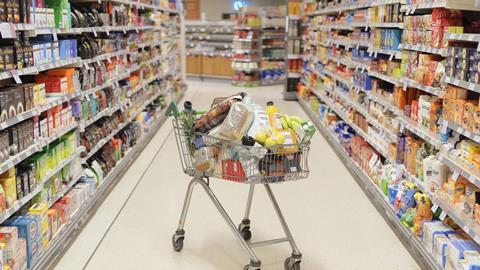













































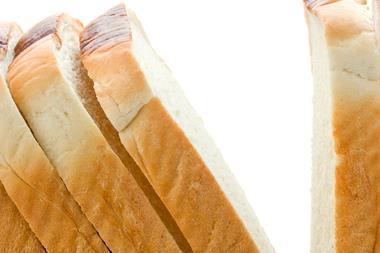

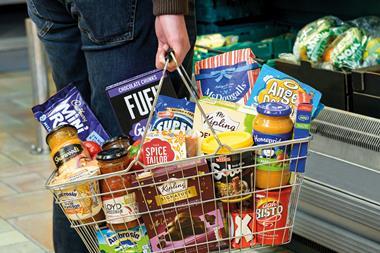

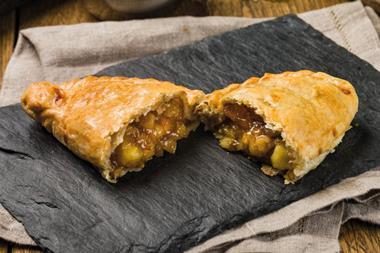







No comments yet